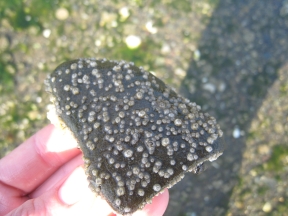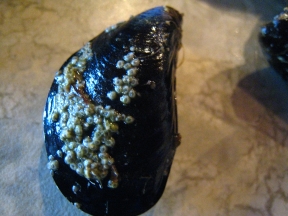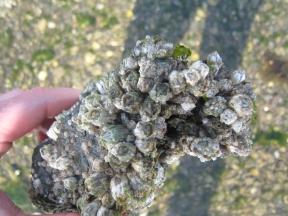May 22, 2008: Barnacles
Hood Canal has had a tremendous barnacle set this year. The little guys are everywhere!


Barnacles attach head first to rocks, shells, pilings, boats, buoys, etc. When the tide is in, their feathery legs, called cirri, sweep through the water for phytoplankton.
Although they look like mollusks, barnacles are actually crustaceans, like shrimp and crab. They spend their infancy as free-swimmers and molt several times during their lives, which is why you occasionally find free-floating barnacle drifting through the water. When they're safely in their home they're very sharp, and count as the number one reason why you should always wear foot protection when swimming in Hood Canal.

There are lots of barnacles in our retail live tank, and customers of all ages get excited whenever they see the barnacles feeding. However, our nascent photographic skills have resulted only in smudgy underwater photos of rock-like creatures, and so, to communicate the wonders of a barnacle feeding, we have to rely on YouTube:
Barnacle reproduction is way more interesting than oyster or clam reproduction: barnacles, which are hermaphrodites, fertilize one another with a penis that can stretch 20 times their body length.
Below: barnacle sex.

1 comment
[…] gotten trapped inside an oyster and then covered with nacre. Diana suggests it might have been a barnacle… and despite the fact that barnacles are especially difficult sea creatures to relate to, […]